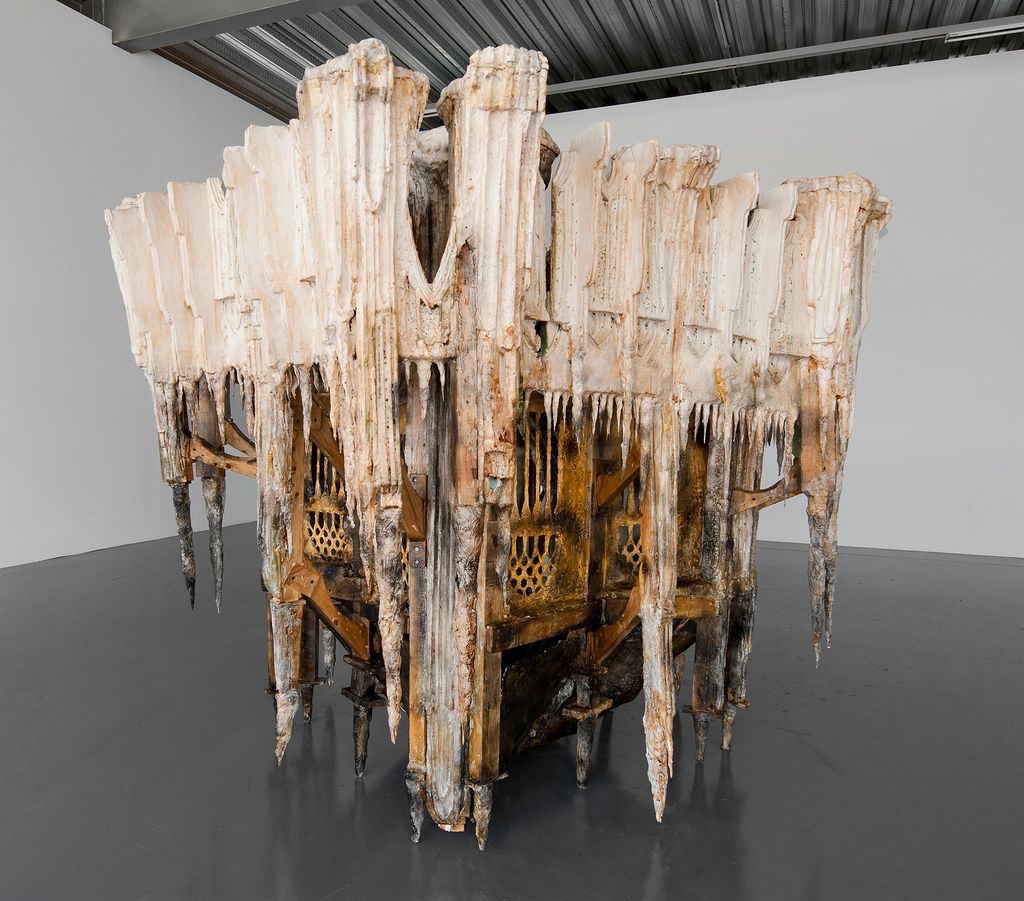unbecoming at the MSU Broad Art Museum with Diana Al-Hadid's Interpretation of a Woman's Wrath

Diana Al-Hadid, Spun of the Limits of my Lonely Waltz, 2006. Image courtesy of the artist and Kasmin Gallery, New York
Be it a woman scorned, a woman's wrath, or a woman's worth, who's to say what's unbecoming?
Sculptor Diana Al-Hadid debuts new and revisited works at the Eli and Edythe Broad Art Museum at Michigan State University (MSU Broad Art Museum) on view through December 14, 2025 – an exhibit titled unbecoming that “defies centuries old conventions of femininity and womanhood.”
Looking through her work evokes an otherworldly feeling for me; the word “remnants” places itself in mind. Figuratively speaking, titling this showcase “unbecoming” in itself speaks to the “remnants” of femininity that are sacrificed be it by choice or force. unbecoming showcases nearly twenty years of Al-Hadid's career and marks the debut of four new pieces – a reinterpretation of The Seventh Month (2015) alongside a new series of three inspired by Scheherazade and Dunyazad in One Thousand and One Nights
"Women are often told not to take up space, whether that's by physically getting out of the way, not sharing their opinions or being told to limit their emotions or reactions," said Rachel Winter, Ph.D., assistant curator. "Taking up space puts a woman at risk of being deemed unbecoming. Diana Al-Hadid's 'unbecoming' invites visitors to rethink how expectations for women and definitions of unbecoming have taken shape over time and to embrace the unbecoming as full of potential."
Al-Hadid is a Syrian born sculptor, painter and handmade paper artist based in New York. Having moved to the United States as a child, she grew up in Ohio, later earning a Bachelor of Fine Arts from Kent State University, followed by a Master of Fine Arts from Virginia Commonwealth University. This solo exhibition utilizes a variety of mediums and materials, honing in on Al-Hadid’s sculpting expertise; she is known for working with wood, steel, fiberglass, aluminum, cardboard, expanded polystyrene, reinforced polymer gypsum, paper and even wax.
Al-Hadid draws from feminine entities like Medusa, the Greek mythology figure known as a Gorgon with a gaze that turned onlookers into stone; a woman said to have cursedly “unbecame” due to another woman’s wrath. Al-Hadid peers into history and the adaptation of the behavior accepted, desired and ogled at from women. Another inspiration is folklore matriarch Scheherazade, the last wife of the ruler Shahryar, who was known to spare her own life by telling the king stories within stories night after night, keeping his curiosity at the forefront and distracting him from his wrath.

